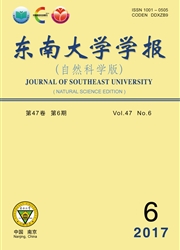

 中文摘要:
中文摘要:
结合K近邻、核学习方法、特征线重心法和LDA算法,提出了用于情感识别的LDA+kernel-KNNFLC方法.首先针对先验样本特征造成的计算量庞大问题,采用重心准则学习样本距离,改进了核学习的K近邻方法;然后加入LDA对情感特征向量进行优化,在避免维度冗余的情况下,更好地保证了情感信息识别的稳定性.最后,通过对特征空间再学习,结合LDA的kernel-KNNFLC方法优化了情感特征向量的类间区分度,适合于语音情感识别.对包含120维全局统计特征的语音情感数据库进行仿真实验,对降维方案、情感分类器和维度参数进行了多组对比分析.结果表明,LDA+kernel-KNNFLC方法在同等条件下性能提升效果最显著.
 英文摘要:
英文摘要:
Based on KNN (K-nearest neighbor), kernel learning, FLC (feature line centroid) and LDA ( linear discriminant analysis) algorithm, the LDA + kernel-KNNFLC method is put forward for emotion recognition according to the characteristics of the speech emotion features. First, in view of the large amount of calculation caused by the prior sample characteristics, the KNN of kernel learning method is improved by learning sample distances with the FLC. Secondly, by adding LDA to emotional feature vectors, the stability of emotional information recognition is ensured and dimensional redundancy is avoided. Finally, by the relearning of feature spaces, LDA + kernel-KNNFLC can optimize the degree of differentiation between emotional feature vectors, which is suitable for speech emotion recognition (SER). An emotional database is used for simulation tests, which contains 120 dimensional global statistical characteristics. Multiple comparison analysis is conducted through the dimension reduction scheme, emotion classifiers and dimension parameters. The results show that the improvement effect for SER by using LDA + kernel-KNNFLC is remarkable under the same conditions.
 同期刊论文项目
同期刊论文项目
 同项目期刊论文
同项目期刊论文
 期刊信息
期刊信息
